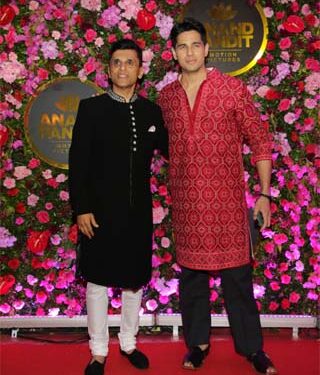- Pandit notes how far Indian cinema has traveled in terms of technological smarts
- Today, the audience wants to be transported beyond the known and the familiar and to enjoy immersive entertainment, says Pandit
GOQRI MANICKAVASAGAM
There was a time when VFX in cinema meant hand-painted sets, stop motion, reverse motion, and double exposure effects but Indian cinema has come a long way since then. In most of the recent blockbusters, be it ‘Baahubali: The Beginning’ and its second part, ‘RRR’, ‘Brahmāstra: Part One – Shiva’ or the latest Mani Ratnam hit, ‘Ponniyin Selvan: I’, audiences have been treated to jaw-dropping, transportive VFX.
The latest entrant in the state-of-the-art VFX club is the Indra Kumar helmed, Ajay Devgn, and Sidharth Malhotra starrer, ‘Thank God’ which was released in theaters close to Diwali. The movie deals with the afterlife, a not-so-common subject, and shows Ajay Devgn as ‘Chitragupta’ who plays the ‘Game of Life’ with Sidharth Malhotra’s character.
The film’s co-producer Anand Pandit says, ” As far back as in 1938, we had VFX pioneer Babubhai Mistry creating a special effect in the film ‘Khwaab ki Duniya’ with the help of a black thread! Even in ‘Mughal-E-Azam’ in 1960, we saw a breathtaking reflective shot in the sheesh mahal sequence. Be it ‘Mr. India’ in the 1980s or television epics like ‘Chandrakanta’, ‘Mahabharat’ or ‘Ramayan’, it is amazing how our makers were able to achieve so much impact with such scarce technical facilities.” Today, the audience wants to be transported beyond the known and the familiar and to enjoy immersive entertainment, says Pandit and adds, “This is why cinema is now striving to push technological boundaries. ‘Thank God’ for instance is a triumph of cutting-edge VFX. It is a contemporary morality tale so it had to have a production design and slickness that the audience could relate to and the special effects too are on par with the best in the world.”
He also points out that earlier, VFX were used in action or science fiction movies but now, they are being extensively used in period, fantasy, and even contemporary films.
He adds, “Indian audiences are very familiar with VFX effects in Bond and superhero films, in action, disaster, horror, dystopian and science fiction narratives so, we need to match them and am happy that ‘Thank God’ does not disappoint. We have been getting great feedback about the visual effects of the movie and it makes the hard work so worth it.”
The film stars Rakul Preet Singh opposite Sidharth and is also co-produced by Bhushan Kumar, Krishan Kumar, Ashok Thakeria, Sunir Kheterpal, Deepak Mukut, and Markand Adhikari.












